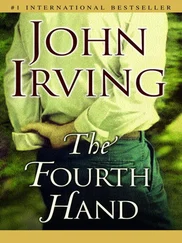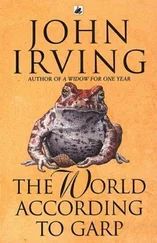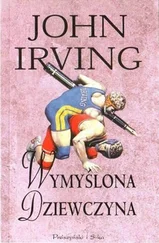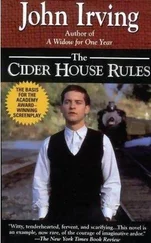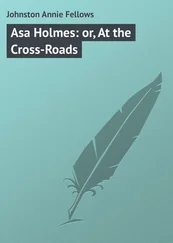Madhu was silent; perhaps she didn’t comprehend the reason for her physical exam, or else she was ashamed. When she covered her breasts and held her hand over her mouth, Madhu looked like an 8-year-old child. But Dr. Daruwalla believed that the girl was at least 13 or 14.
“I’m sure it was someone else who shaved her—she didn’t shave herself,” Farrokh told Deepa. From his research for Inspector Dhar and the Cage-Girl Killer , the doctor knew a few things about the brothels. In the brothels, virginity was a term of sale—not one of accuracy. Maybe in order to look like a virgin, one had to be shaved. The doctor knew that most of the older prostitutes were also shaved. Pubic hair, like underarm hair, was simply an invitation to lice.
The dwarf’s wife was disappointed; she’d hoped that Dr. Daruwalla was going to be the first and last doctor whom Madhu would be required to see. Dr. Daruwalla didn’t think so. He found Madhu disturbingly mature; not even to please Deepa could he give the girl a clean bill of health, not without first making Madhu see Gynecology Tata—Tata Two, as he was more commonly known.
Dr. Tata (the son) was not the best OB/GYN in Bombay, but—like his father before him—he saw any referral from any other physician immediately. It had long been Dr. Daruwalla’s suspicion that these referrals were the heart of Tata Two’s business. Farrokh doubted that many patients were inclined to see Tata Two twice. Despite removing the adjectival “best” and “most famous” from his clinic’s description—it was now called DR TATA’s CLINIC FOR GYNECOLOGICAL & MATERNITY NEEDS—the clinic was the most steadfastly mediocre in the city. If one of his orthopedic patients had a problem of an OB/GYN nature, Dr. Daruwalla never would have referred her to Tata Two. But for a routine examination—for a simple certificate of health, or a standard venereal-disease screening—Tata Two would do, and Tata Two was fast.
He was remarkably fast in Madhu’s case. While Vinod drove Deepa and Madhu to Dr. Tata’s office, where Dr. Tata would keep them waiting only a short time, Farrokh attempted to restrain Martin Mills from playing too zealous a role in embracing that cause which the dwarf and his wife practiced like a religion. Having observed the scholastic’s compassion for the elephant-footed beggar, Vinod had wasted little time in enlisting the famous Inspector Dhar’s services. Unfortunately, it had been impossible to conceal from the missionary that the only uncrippled child in Dr. Daruwalla’s waiting room was, or had been, a child prostitute.
Even before Dr. Daruwalla could complete his examination of Madhu, the damage had been done: Martin Mills had been totally swayed by Vinod and Deepa’s insane idea that every runaway from the brothels of Bombay could become an acrobat in the circus. To Martin, sending child prostitutes to the circus was a step en route to saving their souls. Farrokh feared what was coming next—that is, as soon as it occurred to Martin. It was only a matter of time before the missionary would decide that Ganesh, the elephant-footed boy, could save his little soul at the circus, too. Dr. Daruwalla knew there weren’t enough circuses for all the children that the Jesuit believed he could rescue.
Then Dr. Tata called with the news about Madhu.
“Yes, she is certainly sexually active—too many previous partners to count!—and yes, she has a little something venereal,” said Tata Two. “But, under the circumstances, it could be a lot worse.”
“And you’ll check if she’s HIV-positive?” asked Dr. Daruwalla.
“We’re checking—we’ll let you know,” Dr. Tata said.
“So what have you found?” Farrokh asked. “Is it gonorrhea?”
“No, but there’s some inflammation of the cervix, and a slight discharge,” Dr. Tata explained. “She doesn’t complain of any urethritis—the inflammation in her urethra is so mild, it may go unnoticed. I’m guessing it’s chlamydia I’ll put her on a course of tetracycline. But it’s difficult to diagnose a chlamydial infection—as you know, chlamydiae are not visible under the microscope.”
“Yes, yes,” said Dr. Daruwalla impatiently; he didn’t know this about chlamydiae, but he didn’t care to know. He had been lectured to enough for one day, commencing with a rehashing of the Protestant Reformation and the Jesuitical approach to free will. All he wanted to know was if Madhu was sexually active. And might there be something venereal that he could pin on the acid-scarred Mr. Garg? All of Mr. Garg’s previous discoveries had carried something venereal; the doctor would have loved to attribute the blame for this to Garg himself. Farrokh didn’t believe that the cause of the sexually transmitted disease was always the brothel that the girl was running away from. Most of all—and the doctor couldn’t have explained why—it was Deepa and Vinod’s seemingly good opinion of Mr. Garg that Dr. Daruwalla wished he could change. Why didn’t the dwarf and his wife see that Mr. Garg was egregiously slimy?
“So, if she’s not HIV-positive, you’ll call her clean?” Farrokh asked Tata Two.
“After the course of tetracycline, and provided no one lets her return to the brothel,” Dr. Tata said.
And provided Deepa doesn’t take the girl back to the Wetness Cabaret, or to Mr. Garg, Farrokh thought. Dr. Daruwalla understood that Deepa would need to return to the Great Blue Nile before the doctor knew the results of Madhu’s HIV test. Vinod would have to look after Madhu and keep her away from Garg; the girl would be safe with the dwarf.
Meanwhile, the doctor could observe that the morally meddlesome nature of Martin Mills had been momentarily curbed; the missionary was enthralled by Farrokh’s favorite circus photograph—the doctor always kept it on his office desk. It was a picture of Pratap Singh’s adopted sister, Suman, the star of the Great Royal Circus. Suman was in her costume for the Peacock Dance; she stood in the wing of the main tent, helping two little girls into their peacock costumes. The peacocks were always played by little girls. Suman was putting on their peacock heads; she was tucking their hair under the blue-green feathers of the long peacock necks.
The Peacock Dance was performed in all the Indian circuses. (The peacock is the national bird of India.) In the Great Royal, Suman always played the legendary woman whose lover has been cast under a spell to make him forget her. In the moonlight, she dances with two peacocks; she wears bells on her ankles and wrists.
But what haunted Dr. Daruwalla about the Peacock Dance was neither Suman’s beauty nor the little girls in their peacock costumes. Instead, it always seemed to him that the little girls (the peacocks) were about to die. The music for the dance was soft and eerie, and the lions were audible in the background. In the darkness outside the ring, the lions were being moved from their cages and into the holding tunnel, which was a long, tubular cage that led to the ring. The lions hated the holding tunnel. They fought among themselves because they were pressed too low to the ground; they could neither go back to their cages nor advance into the ring. Farrokh had always imagined that a lion would escape. When the peacock girls were finished with their dance and running back to their troupe tent—there in the dark avenue, the escaped lion would catch them and kill them.
After the Peacock Dance, the roustabouts set up the cage for the lions in the ring. To distract the audience from the tedious assembly of the cage and the setting up of the hoops of fire, a motorcycle act was performed in the open wing of the main tent. It was so insanely loud, no one would hear the peacock girls screaming if a lion was loose. The motorcycles raced in opposite directions inside a steel-mesh ball; this was called the Globe of Death, because if the motorcycles ever collided, it was possible that both riders could be killed. But Dr. Daruwalla imagined it was called the Globe of Death because the sound of the motorcycles concealed the fate of the peacock girls.
Читать дальше


